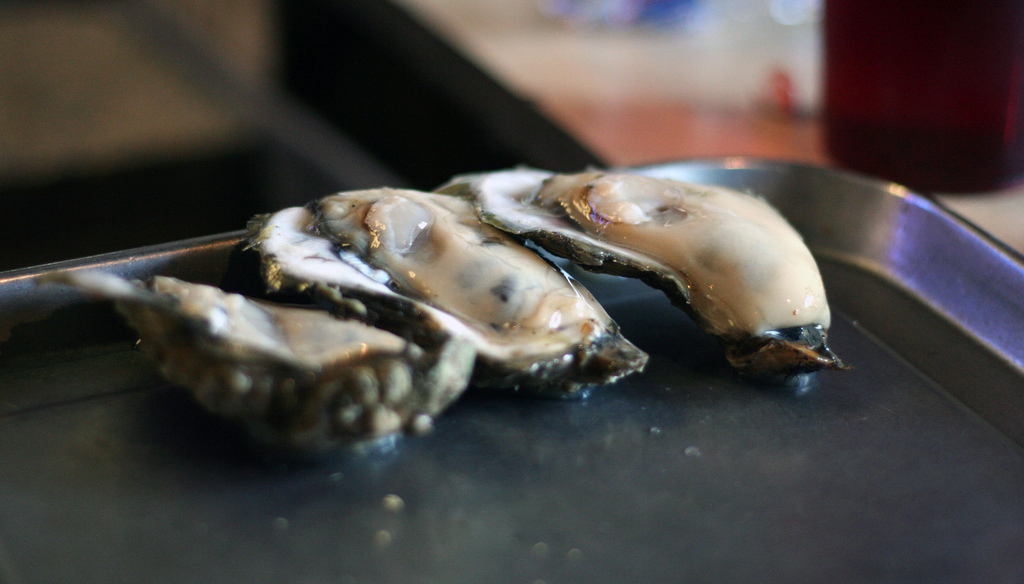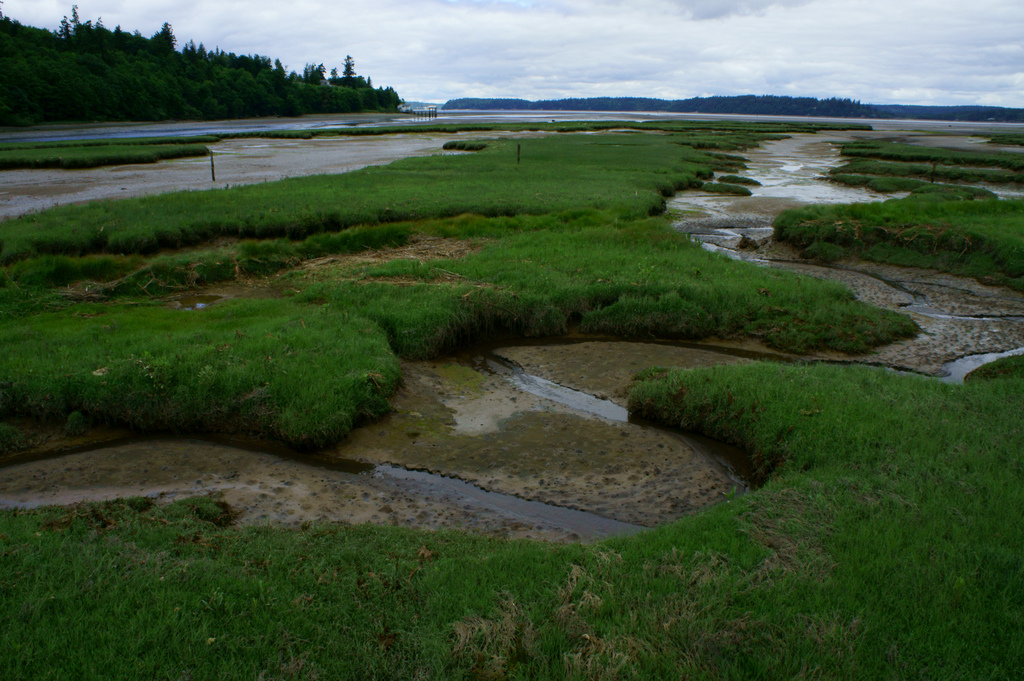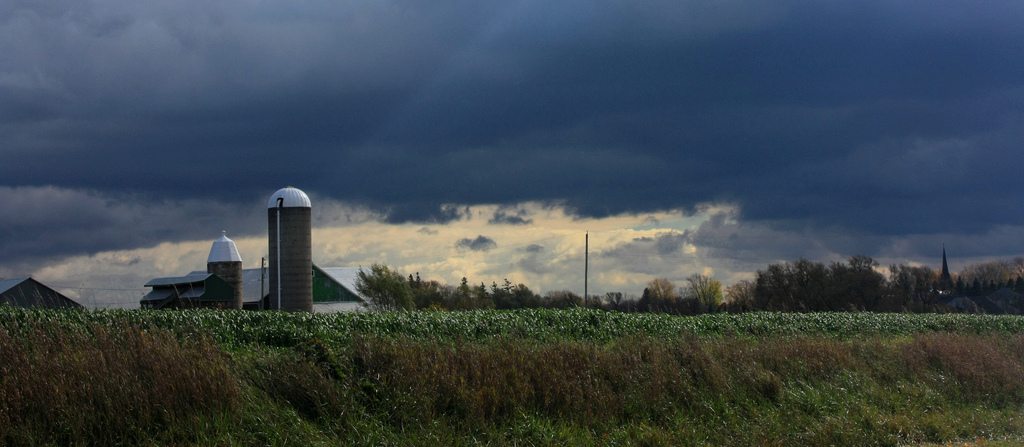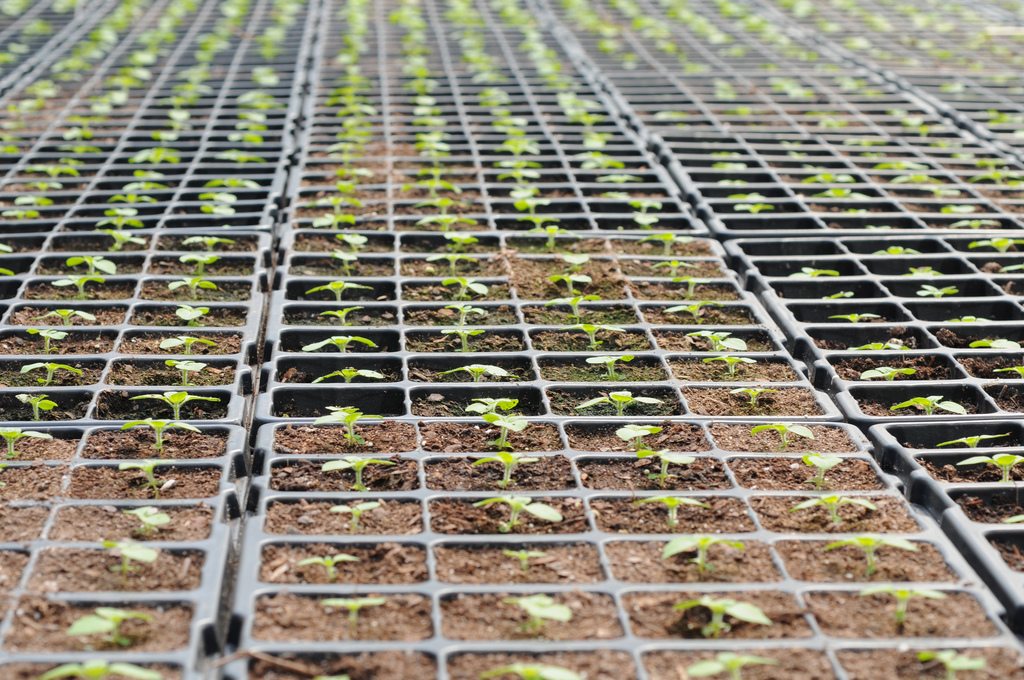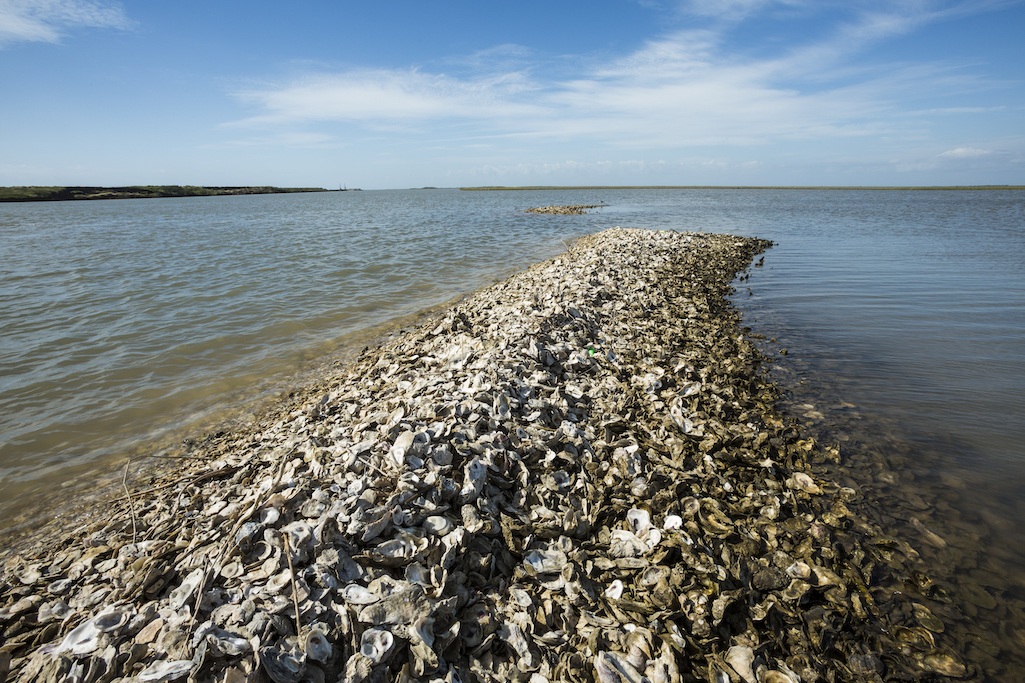
Jerod Foster
The Gulf of Mexico is about to host a new type of oyster reef in its waters.
In November, the Nature Conservancy, an environmental nonprofit, launched a unique restoration project, one that will build a 60-acre oyster reef in the Copano Bay, an estuary located on Texas’ Gulf Coast, just north of Corpus Christi. The bay has long been home to oyster beds, but years of overharvesting, flooding, hurricanes, and drought have sent their populations plummeting. A new Nature Conservancy report issued on Wednesday outlined the totality of that damage.
Unlike most oyster restoration projects, which are built solely to protect declining oyster populations, this one will serve two purposes. Half of it will become a permanent home for the bivalves, while the other half will be designated for harvesting.
That duality reflects just how dynamic a role oysters play in the environment, economy, and culture of Texas.
But oysters are also a large part of Texas’s heritage and identity.
“People have been [harvesting oysters] for generations—that’s a really big part of who Texans are,” says Lily Verdone, director of freshwater and marine science at the conservancy and a Texas resident. “I was just driving down from Austin to Houston today, and there’s lots of road stands saying ‘Gulf coast oysters for sale.’ It’s really a big part of the culture of Texas and the Gulf Coast.”
The eastern oyster accounts for 70% of America’s oyster harvest, and the Gulf Coast is responsible for producing 80 percent of that, generating $1 billion in revenue annually. Gulf region oyster farms harvested 17 millions of pounds of oysters in 2015, according to the latest National Oceanic and Atmospheric Administration (NOAA) fisheries economics report.
In recent years, however, the industry has been repeatedly battered by one disaster after another. In the past decade, oysters have had to contend with algal blooms, hurricanes, droughts, over-harvesting, and more. According to Wednesday’s report, Gulf oyster populations have fallen between 50 to 85 percent. In April, the Texas Parks and Wildlife Department banned oyster harvesting in the Copano Bay because their populations were just too low. All that is to say: The restoration project couldn’t have come a moment too soon.
The reef restoration in the Copano Bay is already in its pre-construction stage. Limestone is currently being extracted in Missouri, where it will be shipped on barges along the Mississippi River to the coast. There, it’ll be placed into the water, then recycled oyster shells will poured on top of the structure. As we’ve reported, adult oyster shells are the favored surface for baby oysters looking to to attach and grow.
The hope is that these new structures won’t just restore oysters to the region, but that they’ll build a reef that can withstand disasters of the future, like storms, droughts, and flooding.
“Oyster populations and natural reefs have not been able to bounce back as they should with all those conditions coming at them at that once,” Verdone says. “Bringing in the limestone is really being heavy handed with the restoration effort to make sure that it’ll be successful into the future.”
The project in Copano Bay will serve as a guide for future restoration projects. The Nature Conservancy plans to follow it up with another hybrid reef, in Galveston Bay, the biggest in Texas.


